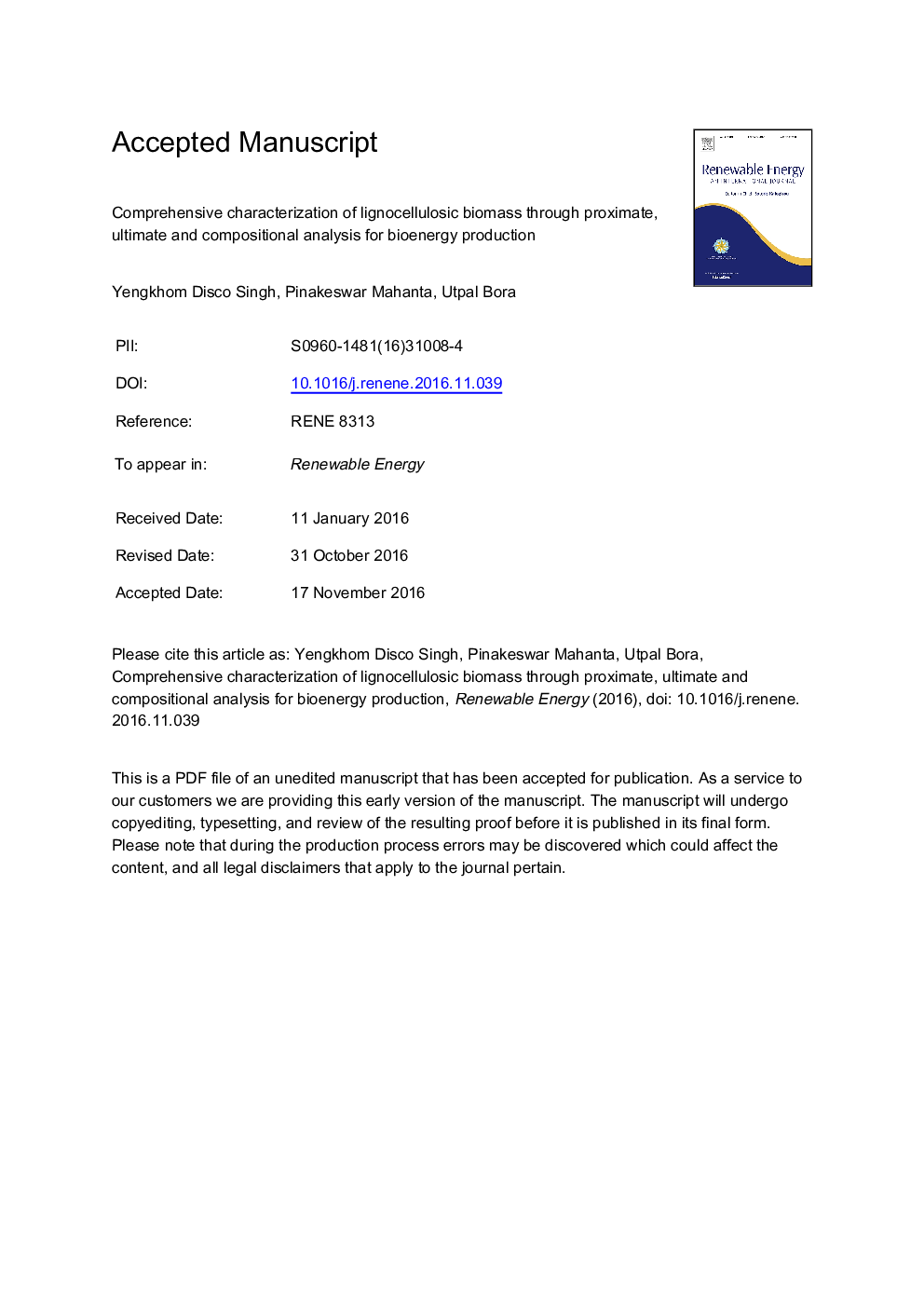| Article ID | Journal | Published Year | Pages | File Type |
|---|---|---|---|---|
| 4926592 | Renewable Energy | 2017 | 29 Pages |
Abstract
We report here the characterization of five biomass samples (Impereta cylindrica, Eragrostis airoides, Typha angustifolia L., Arundinella khasiana Nees ex Steud, and Echinochloa stagnina (Retz.) P. Beauv) based on the proximate, ultimate and compositional analysis. The biomasses were examined physico-chemically and characterized to understand their compositional and structural properties. The moisture content was found to be highest in Typha angustifolia (13.951%) and lowest in Eragrostis airoides (8.275%). Ash content was seen to be maximum in Arundinella khasiana (8.12%) and minimum in Eragrostis airoides (3.660%). Derivative Thermogravimetric (DTG) peak was observed below 120 °C indicating the loss of water molecules from the biomass. Cellulose degradation occured between 350 °C to 500 °C. The maximum carbon content was visible in Typha angustifolia (52.895%) and minimum in Eragrostis airoides (41.024%). The FTIR spectra showed a range of peaks such as 3450 cmâ1, 2860 cmâ1, 1668 cmâ1, 1175 cmâ1, 1097 cmâ1, 7872 cmâ1, 625 cmâ1, 554 cmâ1 etc. The cellulose content was found maximum in Eragrostis airoides (43.17%) and minimum in Echinochloa stagnina (24.90%). The results demonstrate that the collected lignocellulosic biomass could be potential candidate for bioethanol production.
Related Topics
Physical Sciences and Engineering
Energy
Renewable Energy, Sustainability and the Environment
Authors
Yengkhom Disco Singh, Pinakeswar Mahanta, Utpal Bora,
